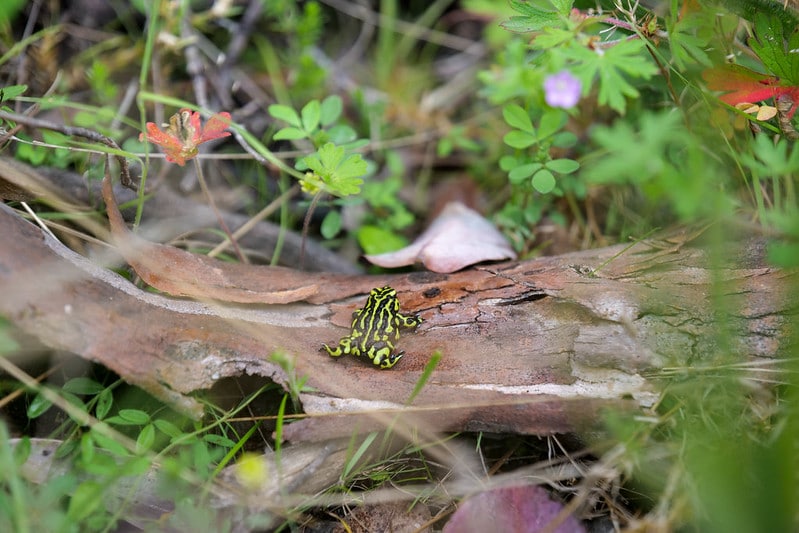The northern corrobboree frog, once common, is now critically endangered, but a long-running project between the ACT Government and the Australian National University to conserve and establish a wild population is showing signs of success.
The introduction of the frogs at a new site within Namadgi National Park is giving rise to cautious optimism, said Rebecca Vassarotti, ACT Minister for the Environment.
Tidbinbilla houses the largest captive breeding population for the frog. Around 700 frogs and over 100 eggs have been released into the site from the Southern Brindabella Mountains over the last two years, as part of a long-running conservation program for the threatened species.
Although northern corroboree frogs have not been historically found at this location, Ms Vassarotti said, the habitat was judged suitable for a self-sustaining population through ‘assisted colonisation’- “meaning they get a bit of a helping hand from us just to get there”.
It is hoped that release efforts will allow breeding populations to persist in the wild and allow them to develop resistance to the chytrid fungus pathogen. Mature males that were captive and released have been heard calling at release sites in the wild, demonstrating that there are some surviving into adulthood in the presence of chytrid fungus, one of the greatest threats to the frog.
Chytrid fungus is a water borne pathogen which attacks the keratin in frogs’ skin, slowly killing them. Some species of frogs are able to carry the pathogen and survive, unfortunately spreading it to others that are susceptible.
“Not only are the introduced frogs persisting in the face of their primary threat, the introduced chytrid fungus, but they are in excellent condition and breeding, indicating they have all the resources they need to thrive,” Ms Vassarotti said.
“This persistence is despite the presence of chytrid fungus, which is everywhere. These positive results could indicate that this site allows the frogs to survive despite the presence of chytrid.”
ANU researcher Ben Scheele said: “Our innovative new methods for establishing wild populations are underpinned by long-term monitoring and research and provide hope for this species and others like it in Australia and globally that are threatened by Chytrid Fungus.”
Mick Gentleman, ACT Minister for Planning and Land Management, said ecologists from across the ACT Government have worked with ANU researchers on the northern corroboree frogs conservation project.
“The captive breeding program at Tidbinbilla Nature Reserve is responsible for generating animals for release, including genetic management, and ensures there is an insurance population of frogs into the future,” Mr Gentleman said.
“Ongoing monitoring and research are essential, and the ACT Government will continue to work in partnership with the ANU to secure the future for Northern Corroboree Frogs in the ACT.
“Getting these frogs back in the wild, where they belong, is just another reason why the ACT Government continues to invest in caring for and protecting our land, flora, and fauna.”
For more information on northern corroboree frogs, visit the ACT Government Tidbinbilla website.



